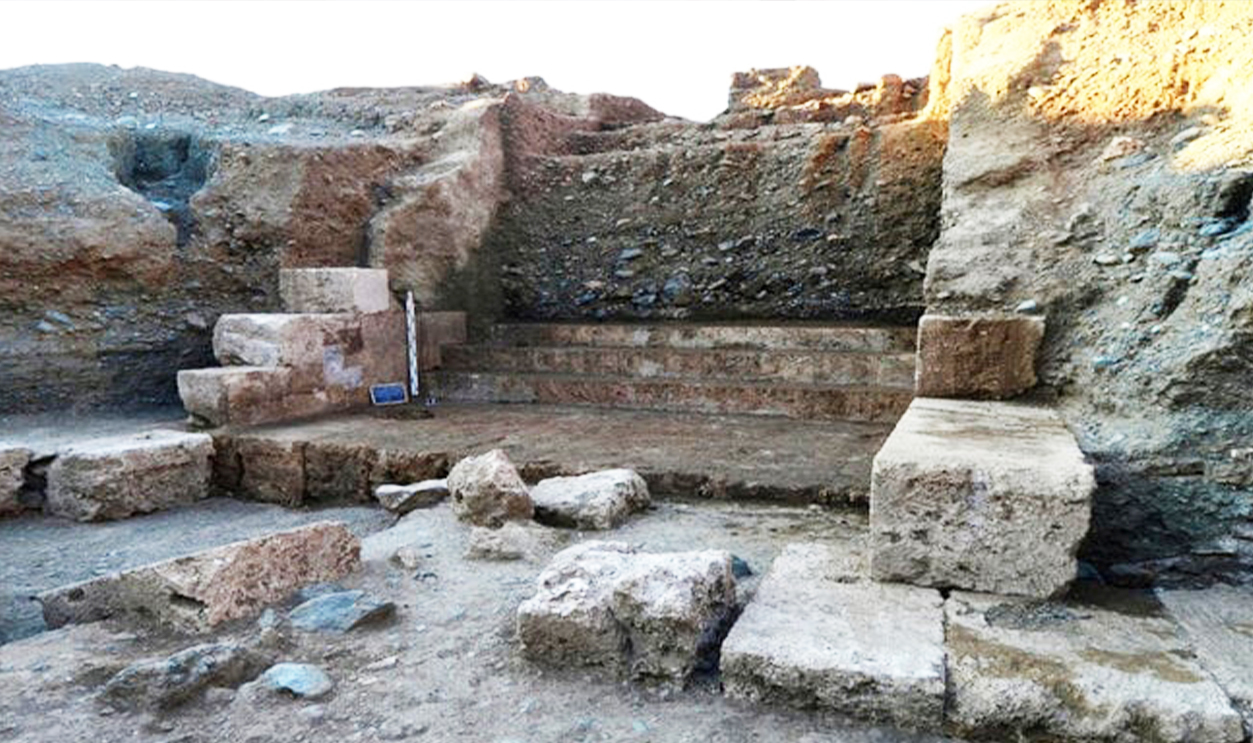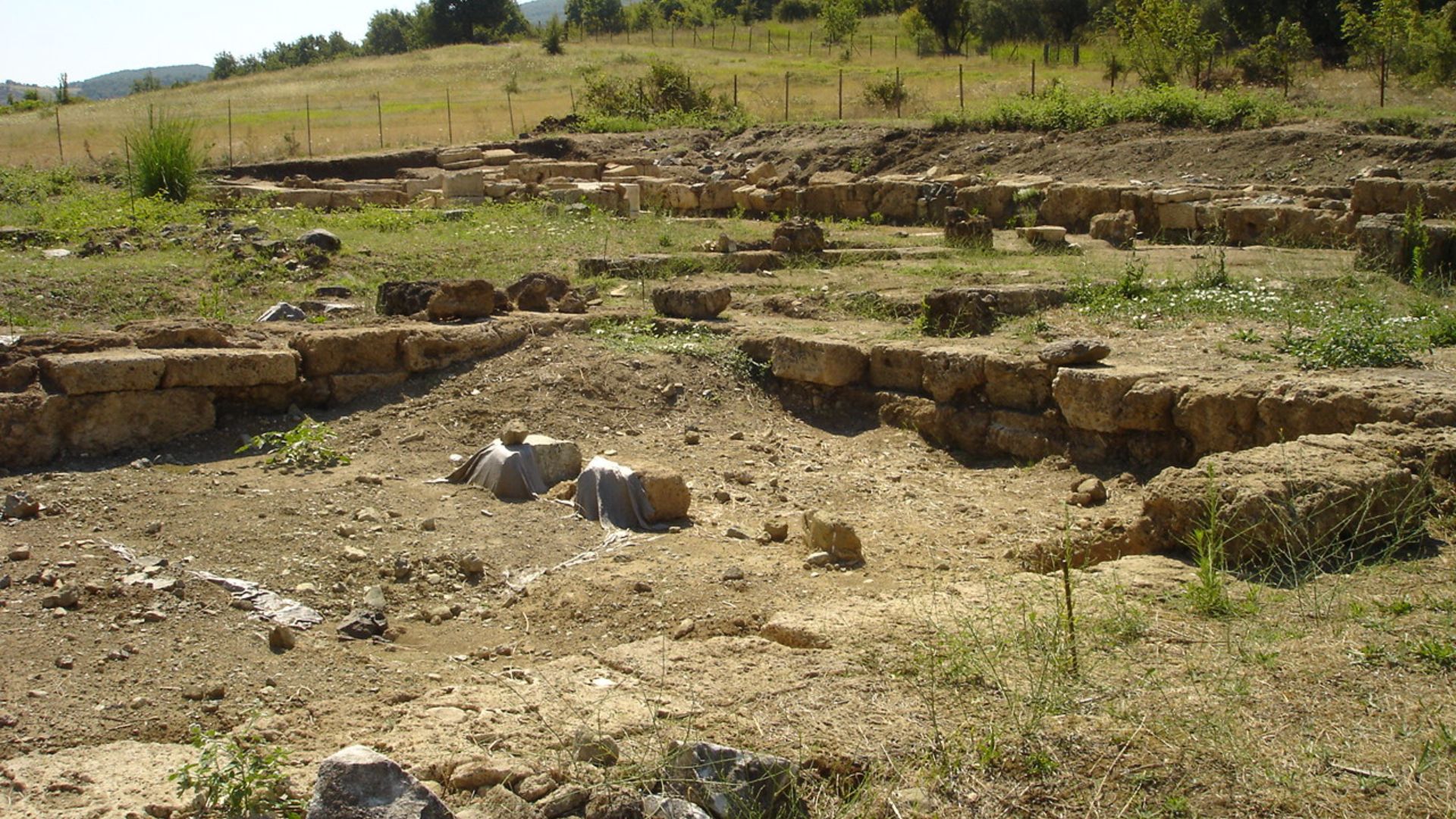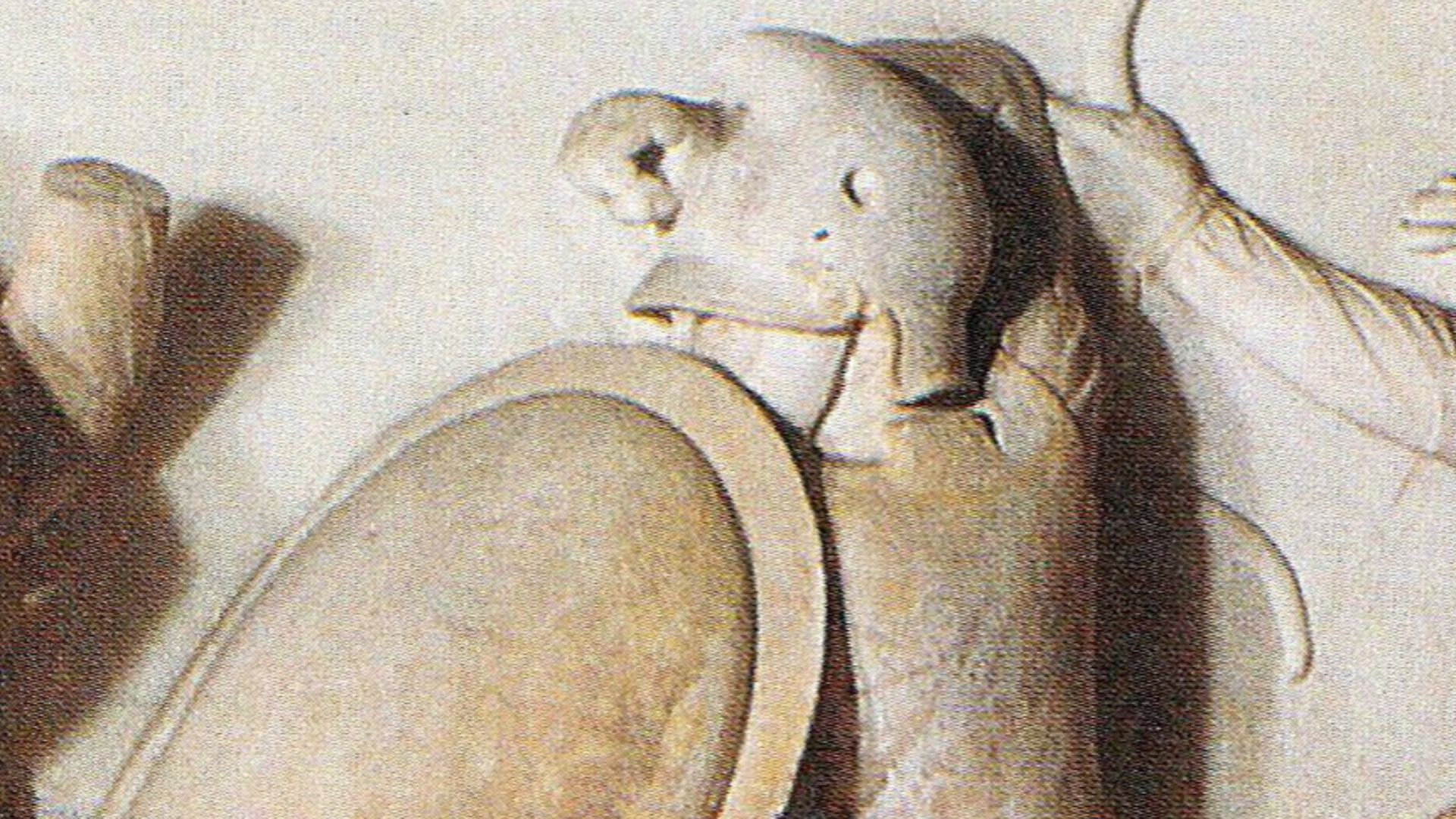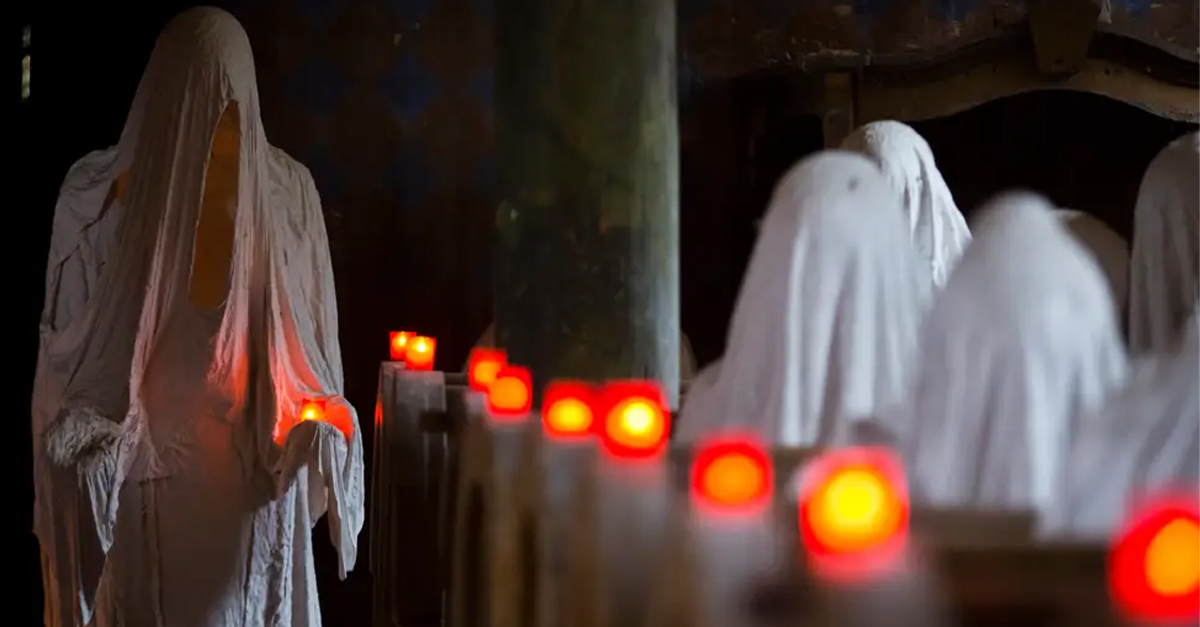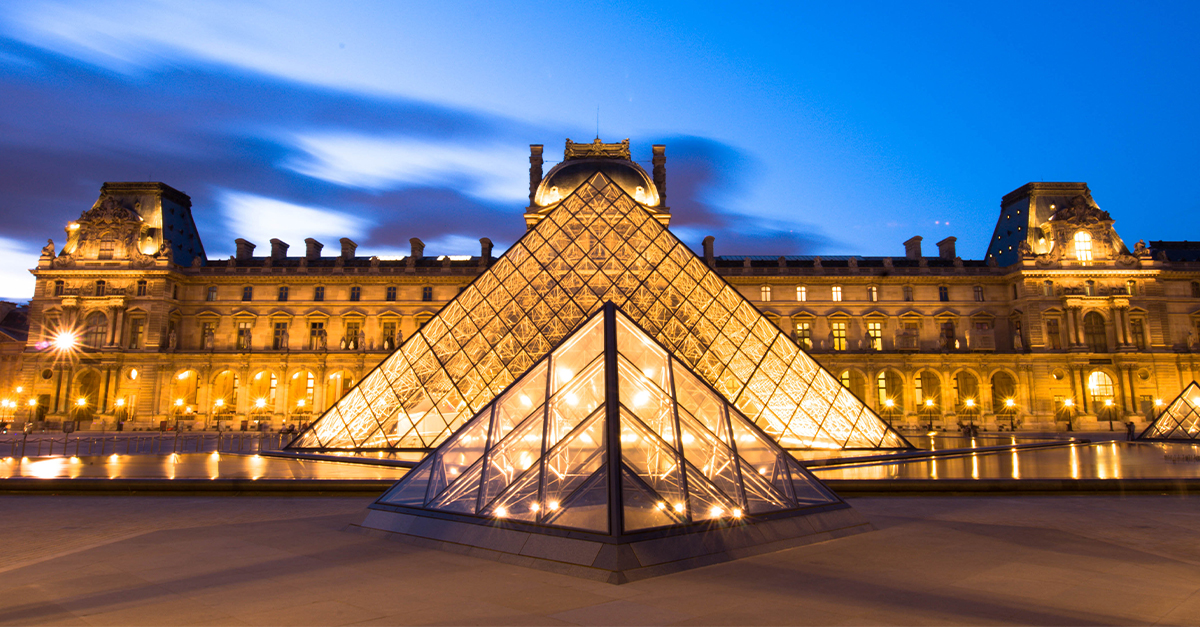An Ancient Surprise Under A Modern Project
Picture this: crews trenching for a brand-new sewage line in northern Greece, and—boom—archaeology happens. In the ancient Macedonian city of Aegae (today’s Vergina), workers hit the façade of a sealed chamber tomb that turned out to be about 2,300 years old. Archaeologists were called in and carefully opened a doorway that had been deliberately blocked with stones. Inside was a compact, lavishly painted room—and a story about Hellenistic high society waiting to be told.

Where Exactly Is Aegae, And Why Should We Care?
Aegae (Aigai in Greek) was the first capital of the Macedonian kingdom and the traditional burial place of its kings. Even after the political center moved to Pella in the 4th century BCE, Aegae stayed the royal necropolis—basically the family cemetery for Macedon’s elite. The UNESCO-listed archaeological site includes a monumental palace, a theater, and a necropolis with hundreds of burial mounds.
The Moment Of Discovery
The find was flagged during routine trenching for a new sewer network in the municipality. According to Angeliki Kottaridi, Honorary Superintendent of the Ephorate of Antiquities of Imathia, the crew stopped, authorities stabilized the façade, and the team opened the tomb just enough to enter safely. That careful intervention preserved fragile mortar and paint on the exterior.
 Mark Landon, Wikimedia Commons
Mark Landon, Wikimedia Commons
First Impressions Inside
The chamber is intimate—roughly 12 feet (3.6 m) long by nine feet (2.7 m) wide—and ornamented with painted bands that imitate gold ribbons tied into bows. It’s a classic Hellenistic design trick: paint that pretends to be precious metal, ritually “dressing” the grave.
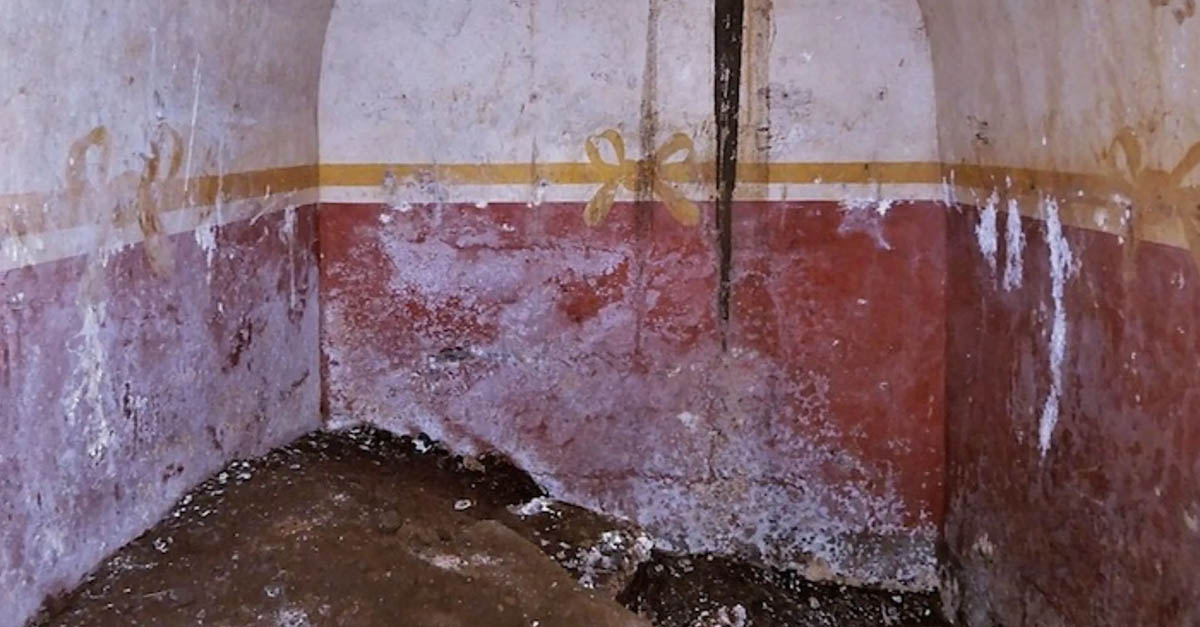 Archaeology News Online Magazine
Archaeology News Online Magazine
Who Owned The Tomb?
The tomb appears to belong to a local nobleman—someone with rank, wealth, and a warrior’s kit. He was buried with a shield reinforced with iron fittings and well-crafted weapons; the quality of the arms suggests high status. Kottaridi has even floated the idea that he may have been a hypaspist, one of the elite royal guards who served Macedonian kings.
 Wikimedia Commons, Richard Mortel
Wikimedia Commons, Richard Mortel
Not A Bachelor’s Grave
The façade seems to have been built in two phases—one for the man, and a second addition to accommodate a woman who was later interred in the same chamber. She was laid to rest with beads, necklaces, and a golden myrtle wreath, the kind of headpiece associated with status, celebration, and sometimes marriage. That pairing of martial gear on him and jewelry on her is textbook Hellenistic gendered grave furnishing.
Dating The Burial
Based on the architecture and the grave goods, archaeologists date the tomb to the third century BCE, well into the Hellenistic era that followed Alexander the Great’s campaigns. That timing is important: it’s exactly when Macedonian warrior elites—and their families—were negotiating new identities, new wealth, and new cultural tastes under changing political realities.
![]() Berthold Werner, Wikimedia Commons
Berthold Werner, Wikimedia Commons
Aegae’s Neighborhood Of The Rich And Famous
This tomb doesn’t stand alone. Aegae’s necropolis has produced royal tombs since at least the 11th century BCE and includes the famous Great Tumulus complex associated with the Macedonian royal house. This is where the tombs Philip II (Alexander the Great’s father) and Alexander IV (Alexander’s son) were unearthed. Excavations across the site have turned up multiple burial clusters, palace architecture, and sanctuaries.
How This Single Tomb Pushes The Story Forward
What’s new isn’t simply “another tomb”. It’s the context: an elite couple, sealed chamber, painted program, and a mixed assemblage of weapons and jewelry—all dated squarely to the Hellenistic period—found in situ during a modern infrastructure project. That combo helps researchers refine how non-royal elite Macedonians presented themselves in death after Alexander, and how couples were commemorated together.
 Miia Ranta from Finland, Wikimedia Commons
Miia Ranta from Finland, Wikimedia Commons
The Décor Matters
Those painted “gold ribbons with bows” aren’t just cute. Hellenistic tomb painting often mimics luxury materials (garlands, ribbons, and gilded bands) to signal celebration and honor. In a funerary setting, that visual language can point to social rank and possibly to rituals performed during interment. Here, the paint sits inside a carefully sealed, stone-blocked chamber—a space designed to be seen briefly and then remembered, not routinely entered.
Weapons As Biography
The shield with iron fittings and the “well-made weapons” do more than mark the deceased as a fighter: they hint at training, wealth, and perhaps service close to the royal court. In Macedon, elite military service—especially as a hypaspist or companion—was a pathway to prestige and land. Putting that equipment in the grave broadcasts identity the same way a title on a resume does today.
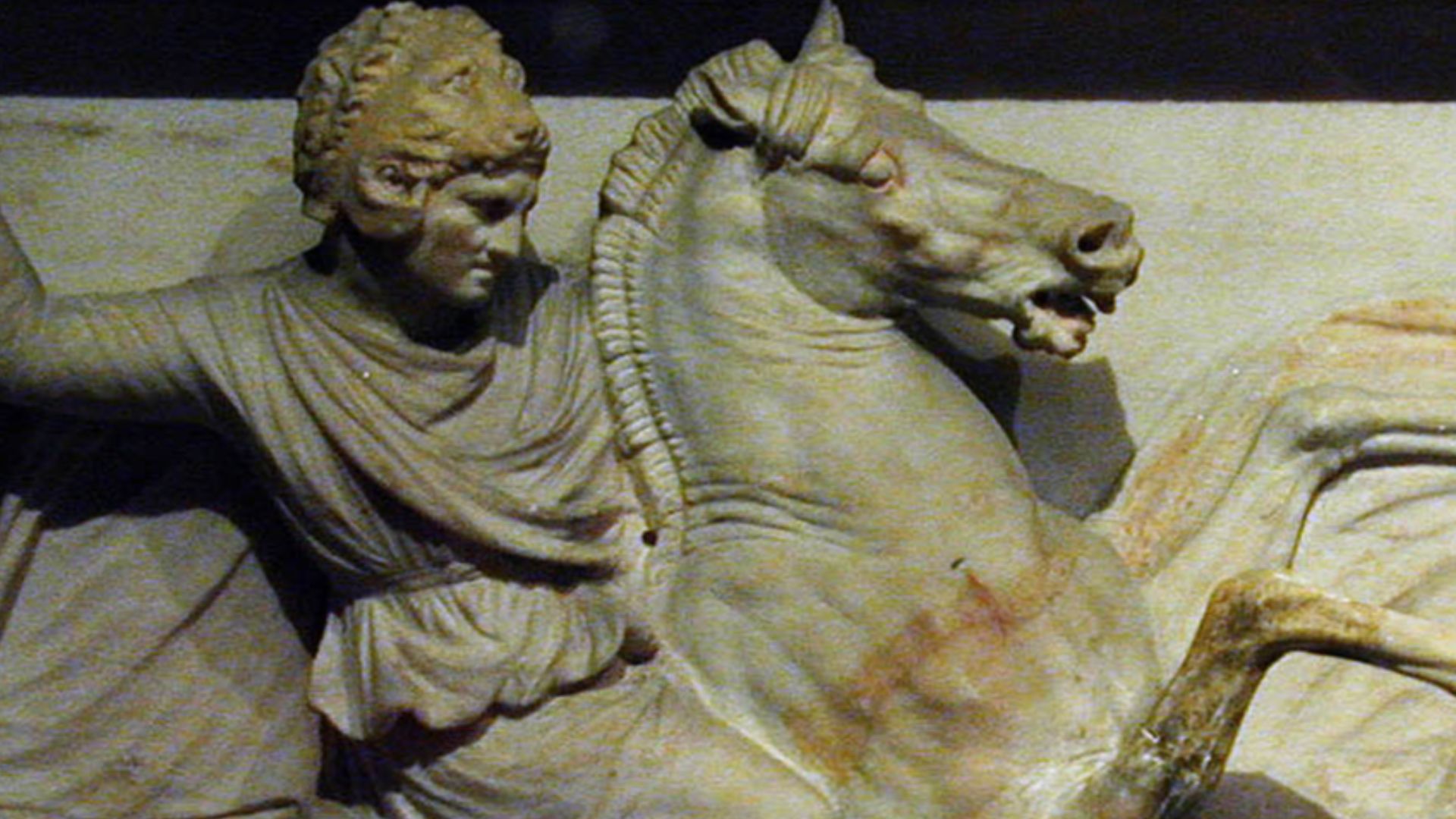 No machine-readable author provided. Marsyas assumed (based on copyright claims)., Wikimedia Commons
No machine-readable author provided. Marsyas assumed (based on copyright claims)., Wikimedia Commons
The Woman’s Things Speak, Too
Beads, necklaces, and a gold myrtle wreath conjure images of ceremony and status, possibly linked to marriage or a cult. In Hellenistic graves, such wreaths often stand in for living crowns of leaves used in festivals and rites. The woman’s inclusion transforms the tomb from a solo warrior memorial into a household story—a unit of two, marked by complementary symbols of status.
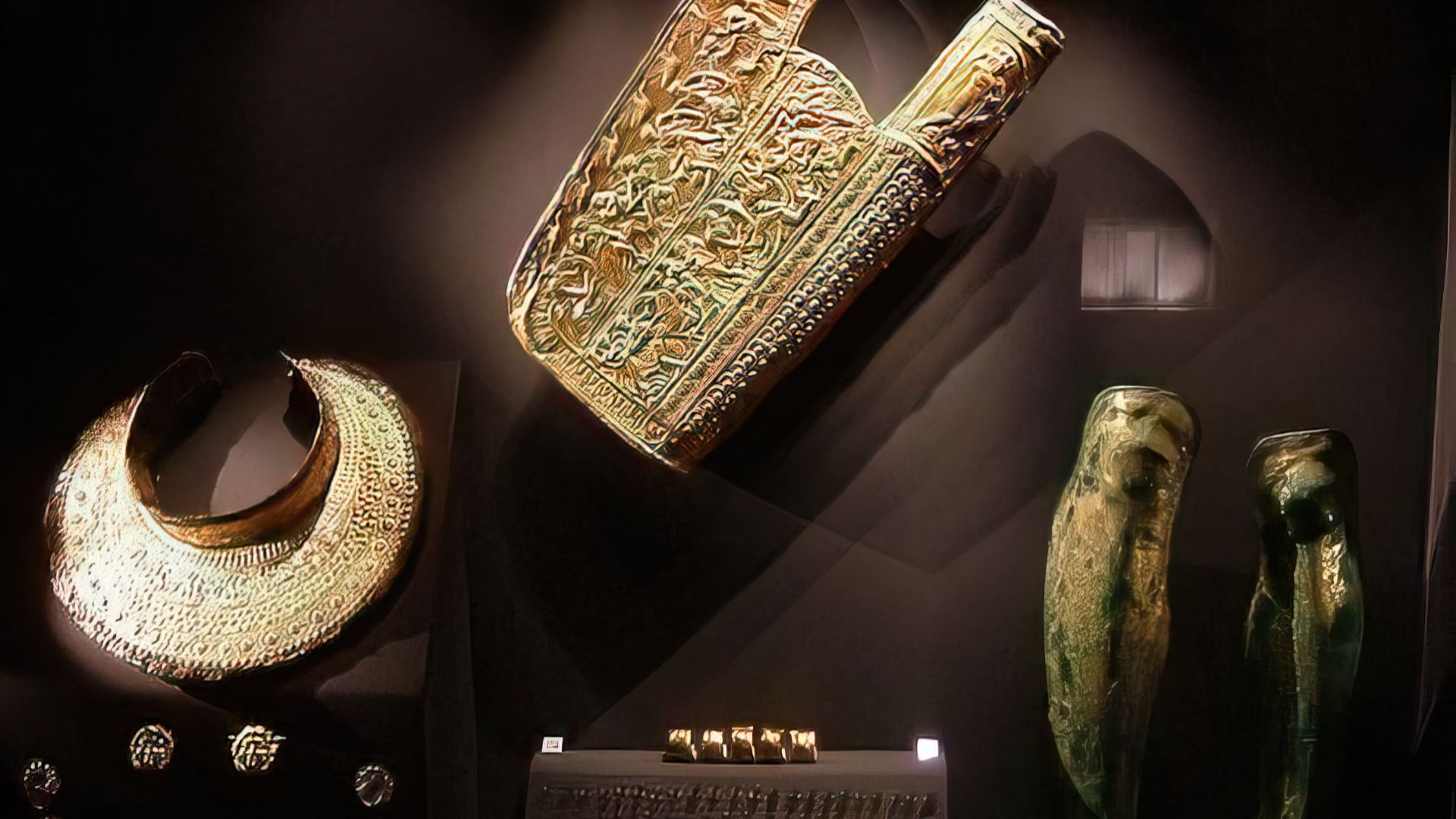 David Grant, Wikimedia Commons
David Grant, Wikimedia Commons
A Two-Phase Façade For Two Moments Of Grief
Architecturally, the façade tells us the tomb wasn’t a one-and-done event. The team sees evidence it was completed first for the man and then altered or extended when the woman died. That’s invaluable: it captures family memory in stone, showing how a tomb could evolve across years as households added the next chapter.
 Evilemperorzorg, Wikimedia Commons
Evilemperorzorg, Wikimedia Commons
From Royal To Elite: Filling In The Social Spectrum
Because Aegae’s most famous graves are royal, it’s easy to skew our mental picture toward kings and queens. Finds like this noble couple’s tomb reset the balance, showing how high-status but non-royal Macedonians emulated court styles (painted décor, metalwork, wreaths) while crafting their own family narratives. In other words, it helps map the broader elite, not just the crown.
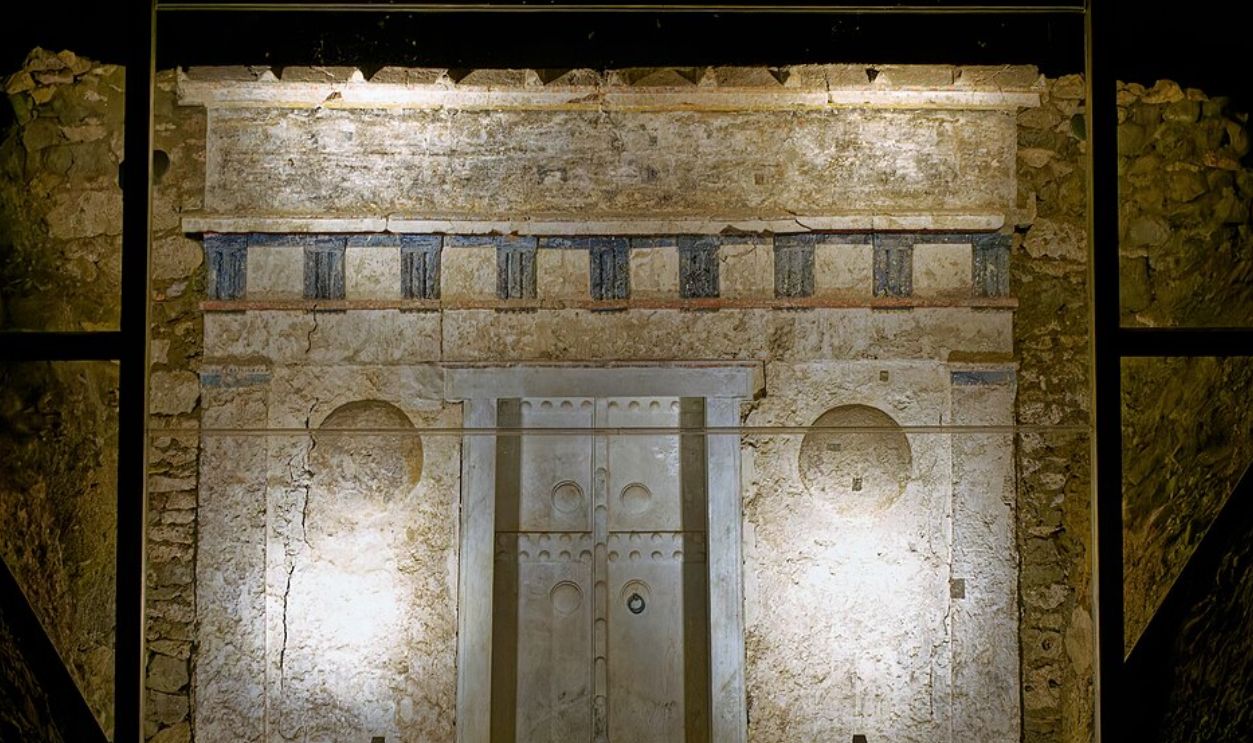 Holger Uwe Schmitt, Wikimedia Commons
Holger Uwe Schmitt, Wikimedia Commons
What Researchers Think So Far
The working hypothesis is that the man was a well-equipped warrior of significant standing—possibly tied to the royal guard—and his partner shared the signals of ceremonial status. The chamber’s date, décor, and paired burials fit neatly with Aegae’s role as a necropolis for Macedonia’s upper crust in the 3rd century BCE. More lab work (on bones, pigments, and metals) will refine this, but the architectural and artifact cues already speak volumes.
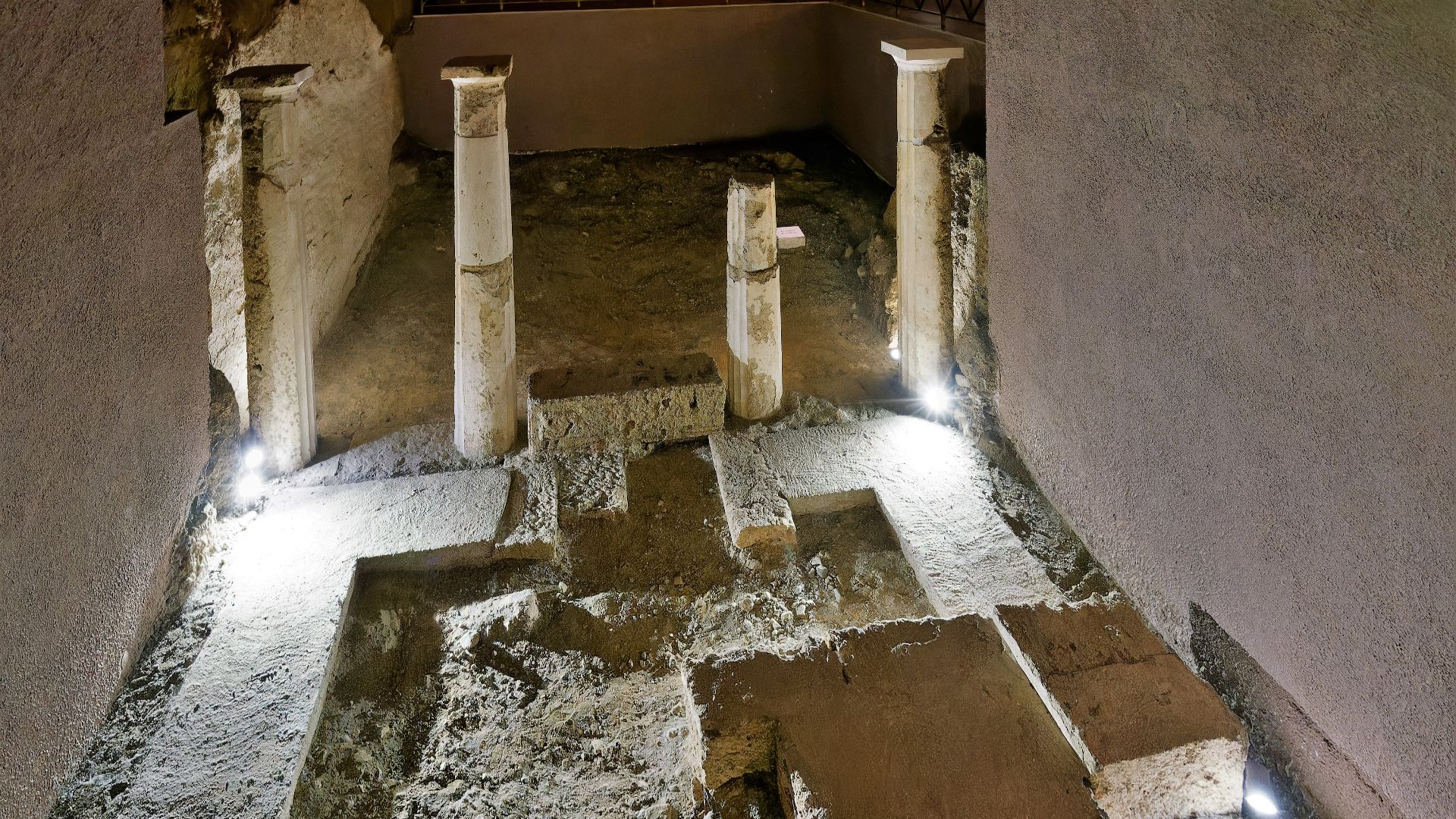 Holger Uwe Schmitt, Wikimedia Commons
Holger Uwe Schmitt, Wikimedia Commons
How This Changes The Hellenistic Burial Playbook
The Hellenistic period is infamous for mixing traditions (Greek, Macedonian, Near Eastern) into something fresh. Macedonian chamber tombs often include banquet imagery, weaponry, wreaths, and rich pigments. This new find refreshes that template with a clean, well-preserved example tied to an identifiable household. It strengthens the case that couple burials with gender-coded grave goods were an established choice for Macedonian elites.
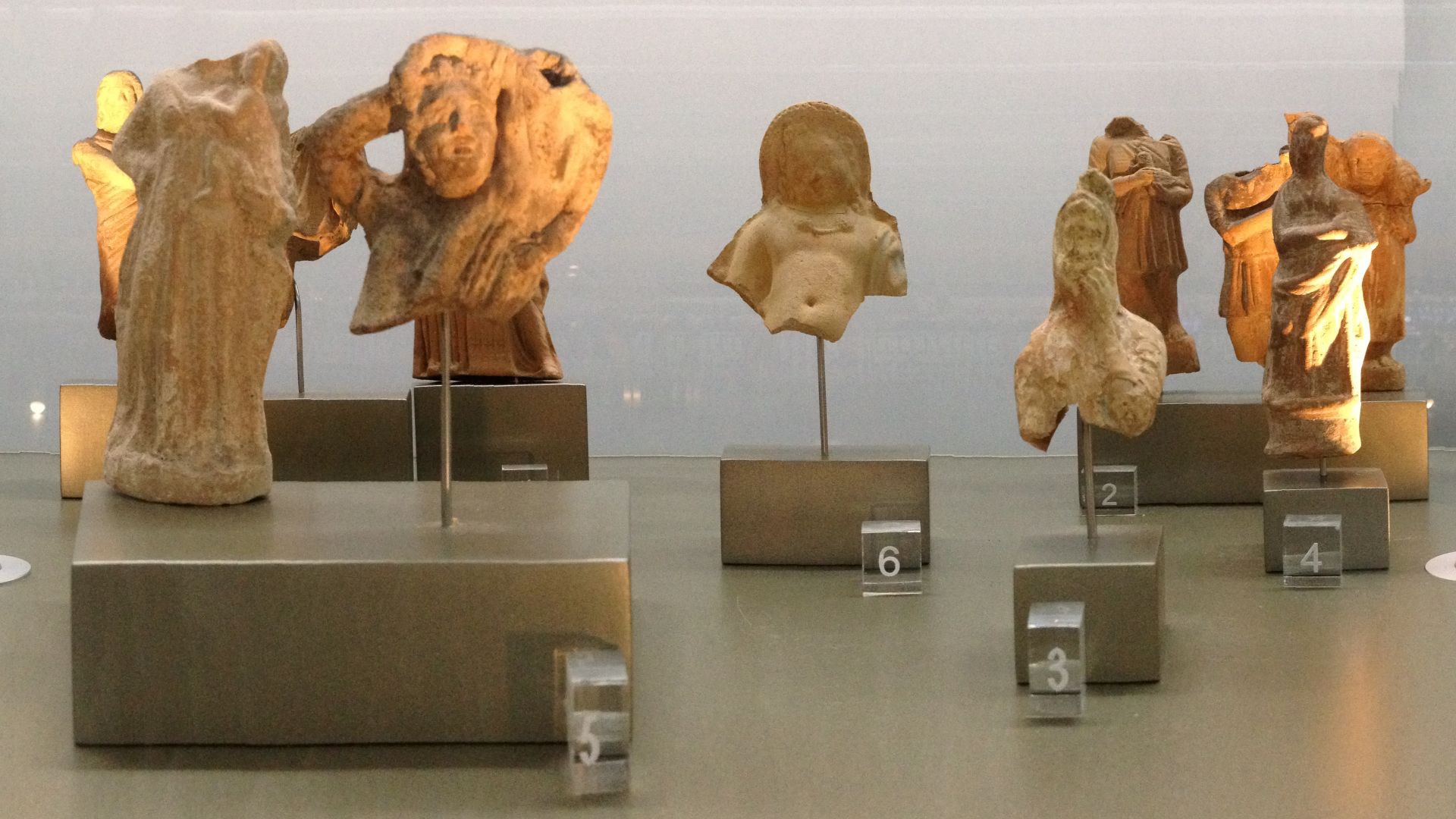 RomanDeckert, Wikimedia Commons
RomanDeckert, Wikimedia Commons
The Theater And Palace In The Background
Just uphill from parts of the cemetery lie the palace and theater complex where Philip II was assassinated in 336 BCE—the dramatic scene-setter for Alexander’s rise. That geography is key: in Macedon, court ceremony, performance, and burial all shared one landscape. The new tomb plugs straight into that world.
 Ny Carlsberg Glyptotek, Wikimedia Commons
Ny Carlsberg Glyptotek, Wikimedia Commons
Why Aegae Keeps Giving
UNESCO’s write-up notes the vast spread of tumuli (over 300) and the extraordinary palace remains—the city’s monumental footprint is huge for a pre-Roman center. Every new trench risks (or promises) another encounter with that past. This is exactly why modern works at Aegae require close archaeological oversight.
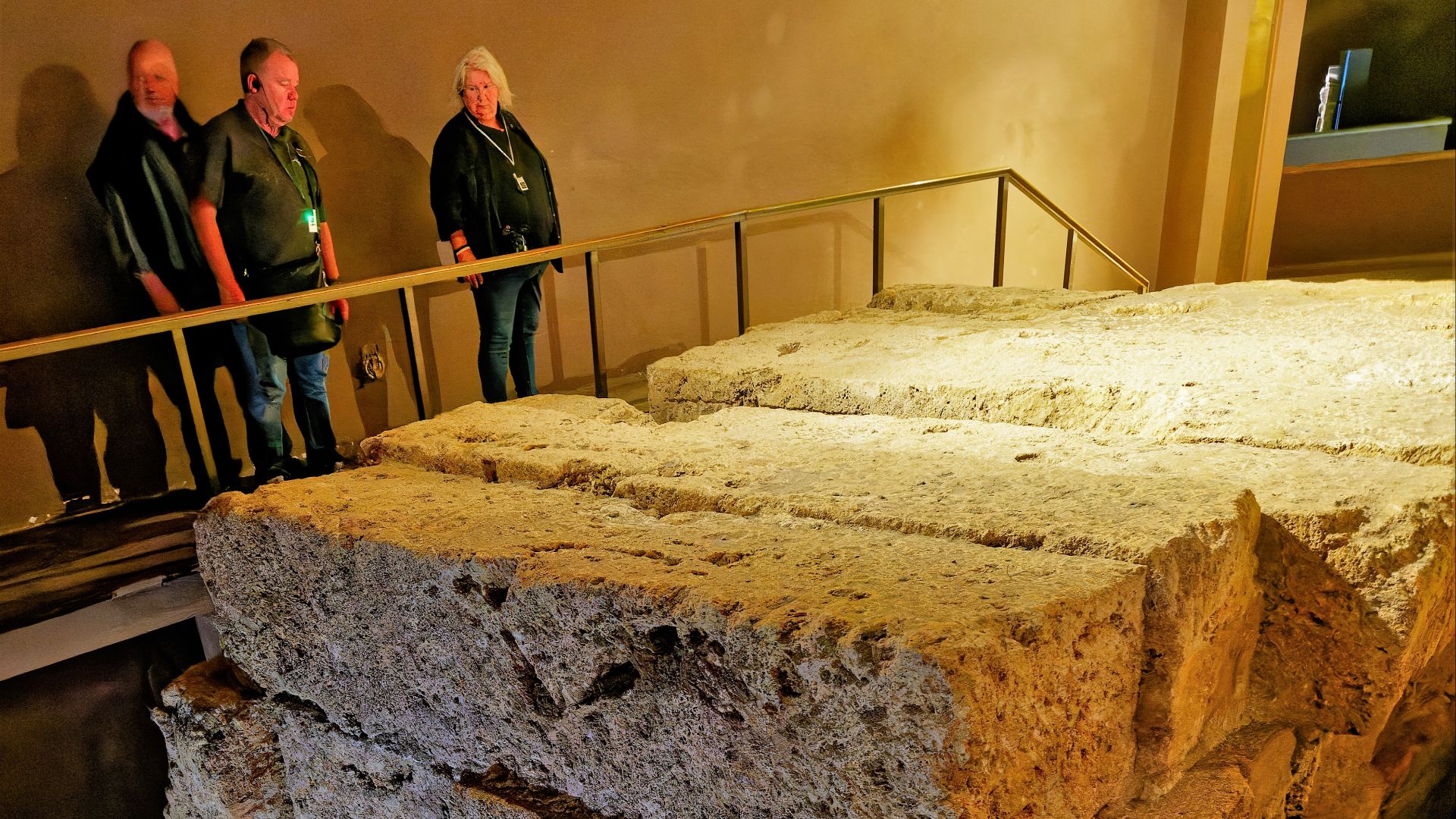 Holger Uwe Schmitt, Wikimedia Commons
Holger Uwe Schmitt, Wikimedia Commons
Conservation First, Story Second
It’s worth celebrating the on-site protocol: stop the digger, protect the façade (mortar and all), and limit the initial opening to what was safe. That triage preserved wall painting and allowed the team to document the chamber properly—crucial for reconstructing ritual behavior and paint schemes that can otherwise vanish with one careless touch.
 Holger Uwe Schmitt, Wikimedia Commons
Holger Uwe Schmitt, Wikimedia Commons
The “Hypaspist” Angle
If the man was indeed a hypaspist, that would place him among the elite infantry who stood between the king and the companion cavalry, operating as royal bodyguards and shock troops. Weapon quality, shield reinforcement, and the burial’s prime real estate would all make sense in that light. We’ll need osteology, metallurgical analysis, and any inscriptions to
What We Still Don’t Know
Identity specifics (names, ages, causes of death), the full inventory of grave goods (once conservation is complete), and the precise sequence between the two interments are still developing. The first announcements focused on dimensions, décor, and key items—shield, weapons, beads, wreath—because those are diagnostic at a glance. Expect a technical report to lock down the rest.
Why This Matters Beyond Macedonia
Hellenistic elite burials across the eastern Mediterranean share family-forward storytelling and conspicuous display. Finds like this one anchor that broader trend in a specific community—Aegae’s courtly orbit—and give researchers a crisp, datable case study. They also help calibrate how far royal aesthetics diffused into the wider aristocracy during the 3rd century BCE.
It’s Not A Coincidence
Vergina’s plains, tucked between the Aliakmon River and the Pieria foothills, have been farmed, built on, and rebuilt for centuries. Modern pipes and cables inevitably slice through ancient suburbs and cemeteries. That’s why countries like Greece bake archaeology into infrastructure timelines—so discoveries like this are a feature, not a disaster.
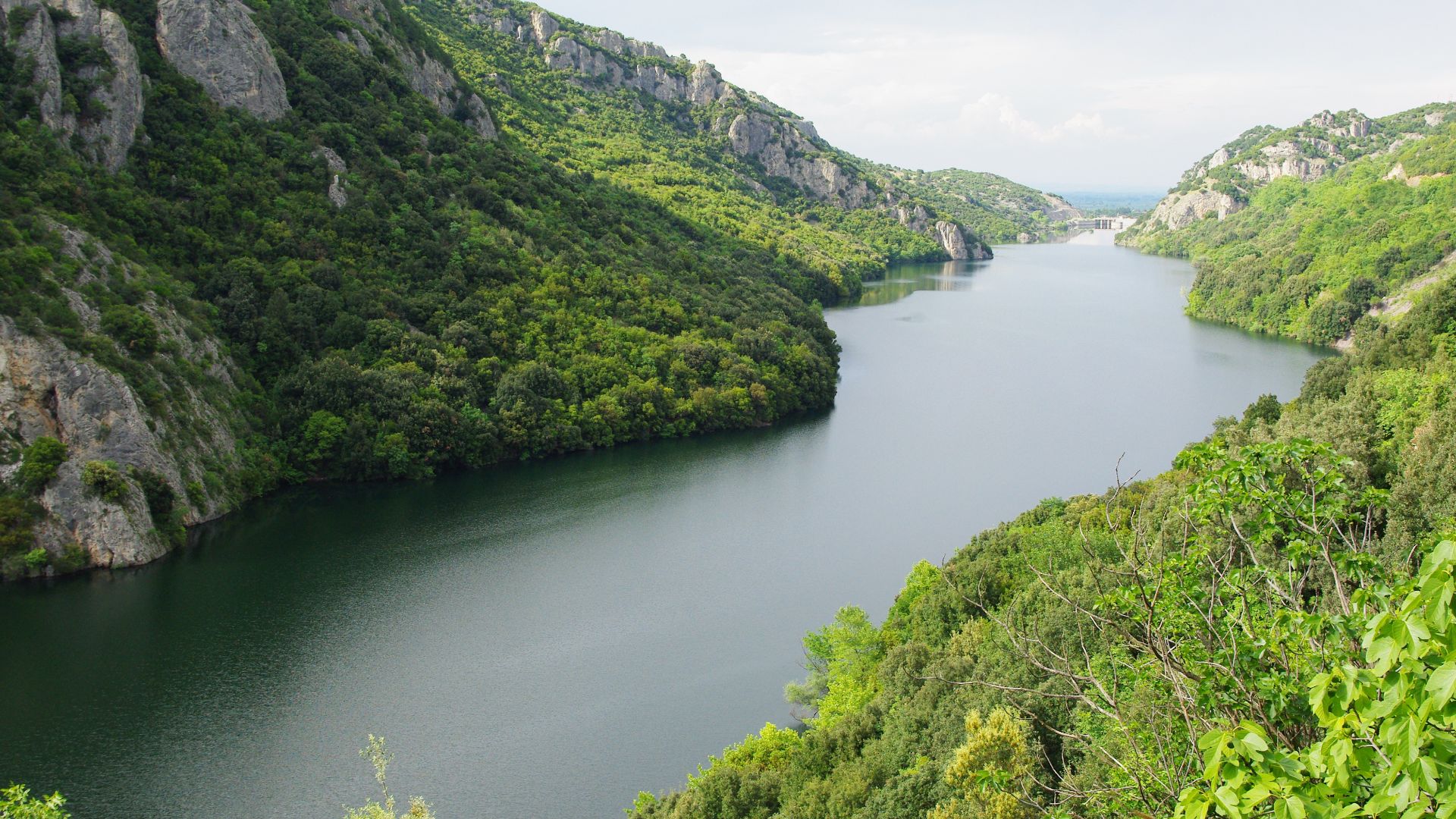 N. DALAVAGAS, Wikimedia Commons
N. DALAVAGAS, Wikimedia Commons
Final Thoughts
It’s funny to think that a 2,300-year-old slice of Macedonian history was sitting quietly beneath the path of a modern sewer line, waiting for a construction crew to stumble across it. Discoveries like this one remind us that history isn’t confined to museums or textbooks—it’s literally under our feet. Every new find at Aegae pulls back another curtain on how people lived, died, and remembered one another in a world that shaped the course of Western civilization.
Aegae will keep revealing its secrets, no doubt. But for now, this tomb gives us a rare, intimate snapshot of the Macedonian elite—ordinary nobles who lived in the shadow of kings, yet shared the same grand ambitions to be remembered.
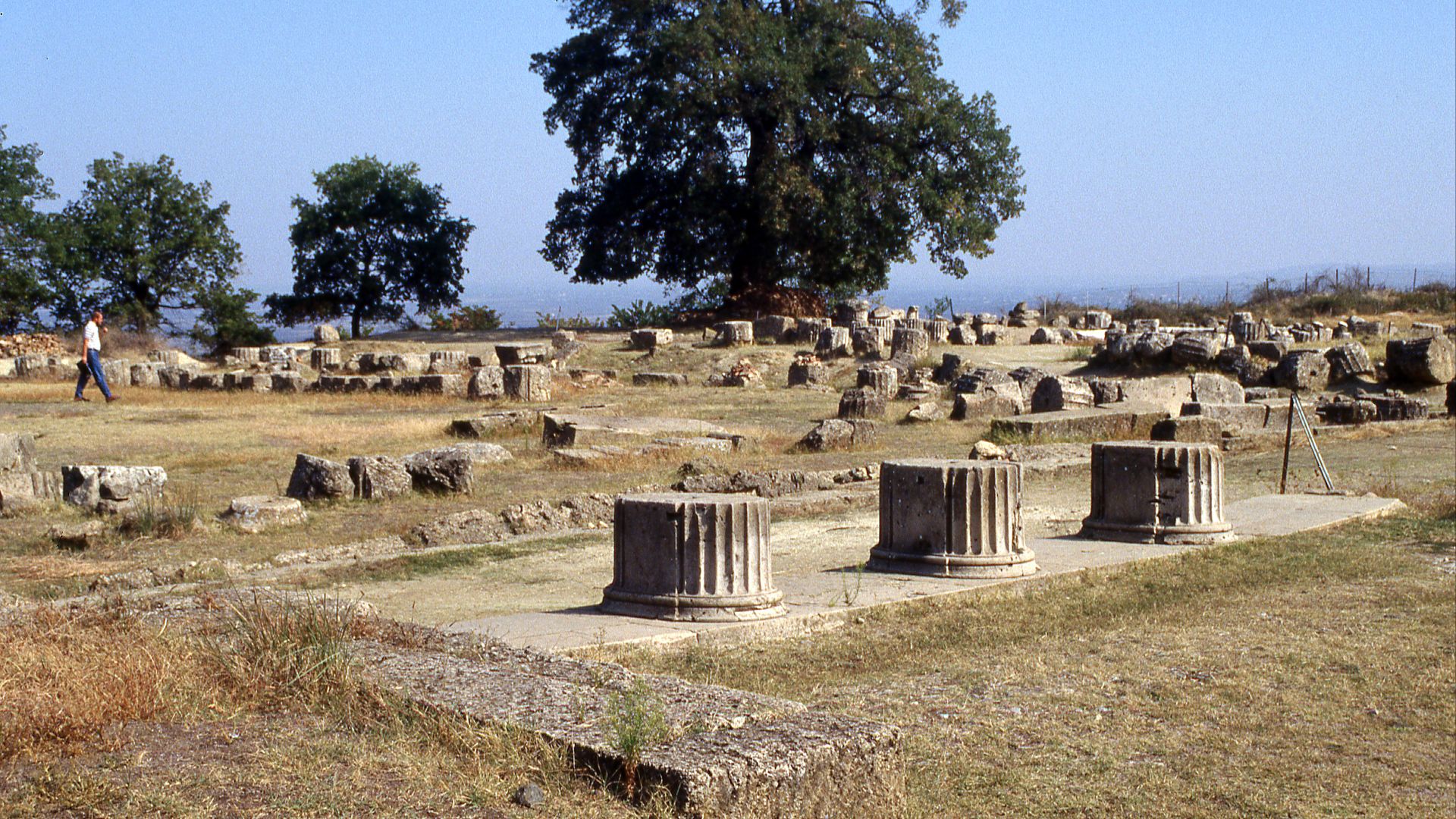 Mark Landon, Wikimedia Commons
Mark Landon, Wikimedia Commons
You May Also Like:
Scientists used CT scans to reveal the first accurate portrait of Egyptian Pharaoh Amenhotep.

